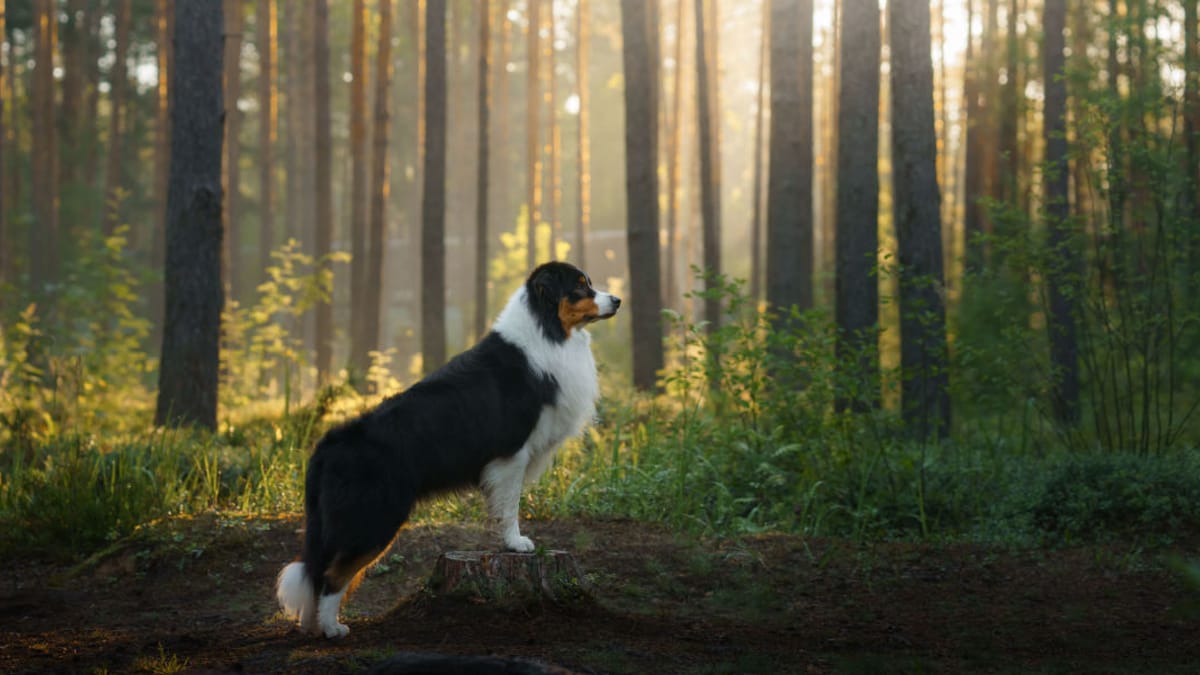Starting from spring, we hear again about the combination of processionaries and dogs, a danger for our animal friends, who could be affected by these very annoying parasites.
Today we want to deepen this topic by talking about theeffect of the processionary sting on the dog and give some advice on how to protect Fido to prevent him from being hit in the first place and see how to behave when unfortunately this happens.
Processionary and dogs: what is it about?
The processionary (also called pine processionary), whose scientific name is Thaumetopoea pityocampais an insect belonging to the family Notodontidae which attacks plants by feeding on the foliage. For the uninitiated, its appearance, in the adult stage, resembles that of a mothfor this reason it is also called “triangular butterfly”.
This insect is widespread in the Mediterranean regions, particularly in Southern EuropeNorth Africa and the Middle East.
This lapidotter is highly harmful, not only for plants, as it compromises their life cycle by depriving them of foliage, but also for warm-blooded animals (including man).
The larval stage of the Thaumetopoea pityocampa
In particular, it is allo larval stage that the processionary is very dangerous for man and animal since the hair that covers the insect is very stinging. In humans, contact with the stinging hairs of the processionary caterpillar causes a strong allergic reaction which manifests itself with gods symptoms very precise:
- itchingif the contact is skin;
- conjunctivitisif it is the eyes that come into contact with the hair;
- irritation respiratory tract or mucous membranes in case of inhalation or ingestion.
Little curiosity: the name processionary derives from the fact that when the larvae move from one tree to another they move one after the other as if they were in a procession.
But it is not only man who has to fear the effects of this larva. Also in other animals, in particular horses and dogs, this insect can cause disturbances, even serious ones. Let’s see what happens in the dog that comes into contact with this larva.
What does the processionary do to dogs?
The effect of the processionary moth on the dog is rapid and intense: there is a rash associated with itching or edema in the contact area. The respiratory and ocular mucous membranes are particularly sensitive and lesions may occur which can lead to a process of partial tissue necrosis.
The effects of the processionary in dogs can lead to the development of an allergic reaction that can go as far as anaphylactic shock.
The study on the effect of the processionary moth on the dog
The effects of the processionary on the dog are attested by numerous scientific studies. In particular, a French study from 2017carried out on 109 dogs, analyzed the effects of contact between the animal and the hair.
The results were as follows: 86% of the subjects studied experienced edema, up to necrosis, 55% vomiting, dyspnoea and diarrhea.
How to protect dogs from the processionary moth?

Per prevent contact between dog and larva you have to pay close attention to the place where you take Fido during walks. For this reason it is good to know how to recognize a nest: among the leaves of trees such as pines or oaks it is possible to recognize a sort of white cobwebs that unite the leaves together.
If in the spring period in the park where you take the dog there are conifers, but no gods signs indicating that the disinfection has taken placeit is advisable (in order not to take risks) to choose another place for his walks.
However, it is important to always keep your eyes open, as the larvae can also move away from the trees to move to other plants and find themselves on the sidewalks on the way.
In our country the fight against the processionary has been mandatory since 1998. In particular, according to a Ministerial Decree it is necessary to combat the proliferation of these insects since dangerous for the life of our trees.
What to do if the dog smells a processionary moth or touches it?
If you realize that the dog has come into contact with the processionary larvae, first aid procedures must be implemented.
First you have to remove the animal from the plant in which the insect is found e mouth wash and truffle with a solution of water and bicarbonate.
Attention: Washing with water and bicarbonate can be difficult to carry out because the animal, which is suffering, will have a tendency to move away or be aggressive, just because of the pain! In this case it is advisable to put the solution in a syringe and spray it on the dog’s nose and mouth.
What to do after contact between processionary and dogs?
In case of contact between processionaries and dogs, it is necessary to go to the vet immediately.
Since the symptoms evolve within a few hours, the administration of an antihistamine must be carried out as quickly as possible.
Subsequently, the treatment of the lesions is symptomatic and is established according to the importance of the lesions: anti-inflammatories, painkillers and local management of the sores.
In severe cases, a surgery to amputate the affected area (usually this happens when the tongue is affected).

